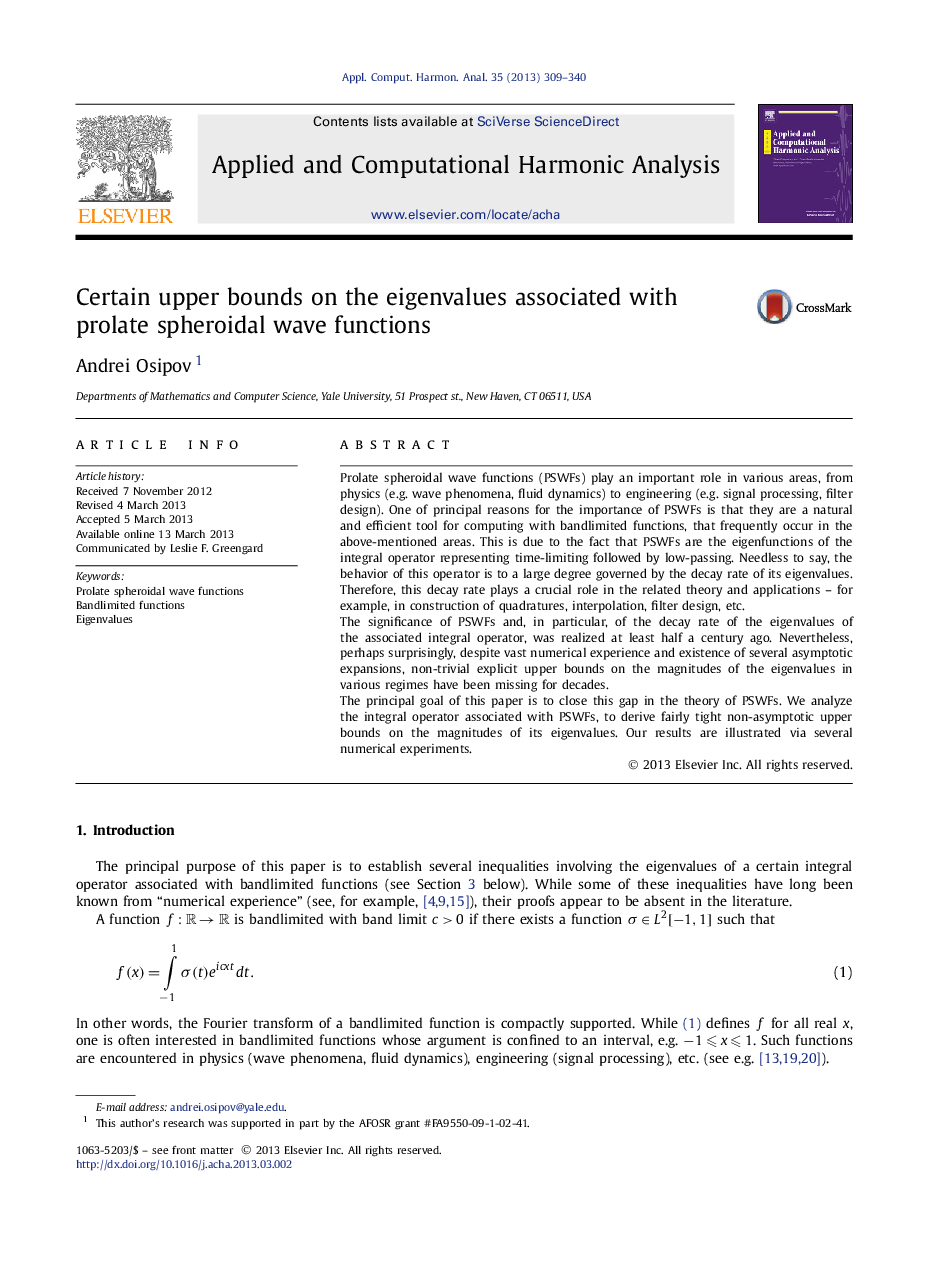| Article ID | Journal | Published Year | Pages | File Type |
|---|---|---|---|---|
| 4605219 | Applied and Computational Harmonic Analysis | 2013 | 32 Pages |
Prolate spheroidal wave functions (PSWFs) play an important role in various areas, from physics (e.g. wave phenomena, fluid dynamics) to engineering (e.g. signal processing, filter design). One of principal reasons for the importance of PSWFs is that they are a natural and efficient tool for computing with bandlimited functions, that frequently occur in the above-mentioned areas. This is due to the fact that PSWFs are the eigenfunctions of the integral operator representing time-limiting followed by low-passing. Needless to say, the behavior of this operator is to a large degree governed by the decay rate of its eigenvalues. Therefore, this decay rate plays a crucial role in the related theory and applications – for example, in construction of quadratures, interpolation, filter design, etc.The significance of PSWFs and, in particular, of the decay rate of the eigenvalues of the associated integral operator, was realized at least half a century ago. Nevertheless, perhaps surprisingly, despite vast numerical experience and existence of several asymptotic expansions, non-trivial explicit upper bounds on the magnitudes of the eigenvalues in various regimes have been missing for decades.The principal goal of this paper is to close this gap in the theory of PSWFs. We analyze the integral operator associated with PSWFs, to derive fairly tight non-asymptotic upper bounds on the magnitudes of its eigenvalues. Our results are illustrated via several numerical experiments.
